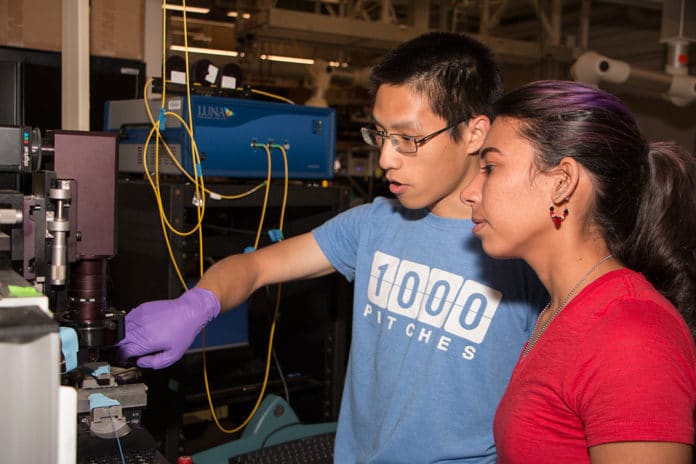Operating lasers at the infrared wavelength of 1,550 nanometers control high-speed fiber-optic Internet communications. A scientist from MIT is developing a chemical sensing sensor by using a new materials system. The new material system was built of silicon carbide on silicon dioxide on silicon. This ongoing research is conducted by Anuradha Agarwal with her collaborators. Anuradha Agarwal is Microphotonics Center Principal Research Scientist at MIT.
Del Valle Morales and Peter Su characterize this new system. Del Valle is MPC/CSME Summer Scholar whereas Peter Su is Engineering (DMSE) graduate student. Once the device has been completely manufactured, Del Valle Morales will use a laser system. Then she will discover how effectively the sensors identify toxic industrial chemical N-Methylaniline. She will also test the Silicon-carbide based sensor before and after exposing it to gamma rays. In the end, the test will show the device’s detection capabilities and properties as a result of radiation exposure.
Del Valle said, “I have done research before. So, I know it’s really important to select a project you like and you’re interested in. Additionally, research in which you can expand your knowledge, so that was one point that helped me decide to join.”
“I liked the excitement and the interest that the grad students and the principal research scientist showed. I think that’s very important. It makes me feel very welcome in the lab, and it makes me feel like I wouldn’t be alone in this whole process of learning something new,” she adds.
Agarwal said, “It is an excellent opportunity for us to have Del Valle in our program. Our students will also learn that how to become a role model to the Summer Scholar, who is typically just a few years younger. She shares a passion for science and technology, her dreams and aspirations for a career in the field of engineering.”
“We are excited as she starts her research in microphotonic sensors. Research in our group progresses faster with the presence of a Summer Scholar. Although we have a willing and able ‘scientist-in-training’ in our midst. In fact, a 2009 MPC-CMSE Summer Scholar [Brian Albert], who came to us while still an undergrad at Columbia, graduated with a Ph.D. in DMSE in 2016,” she then said.
Also read: Engineers Develop a New Biosensor Chip for Detecting DNA Mutations
Valle says, “MPC-CMSE internship program was extremely competitive. It is because it has broad topics and choice of individual projects offered. So, I started to work on my essays and the whole application. I spent maybe three weeks on writing and editing my essay with the help of my English professor.”
MPC and CMSE sponsor the nine-week National Science Foundation (NSF) Research Experience for Undergraduates internships with support from NSF’s Materials Research Science and Engineering Centers program.
